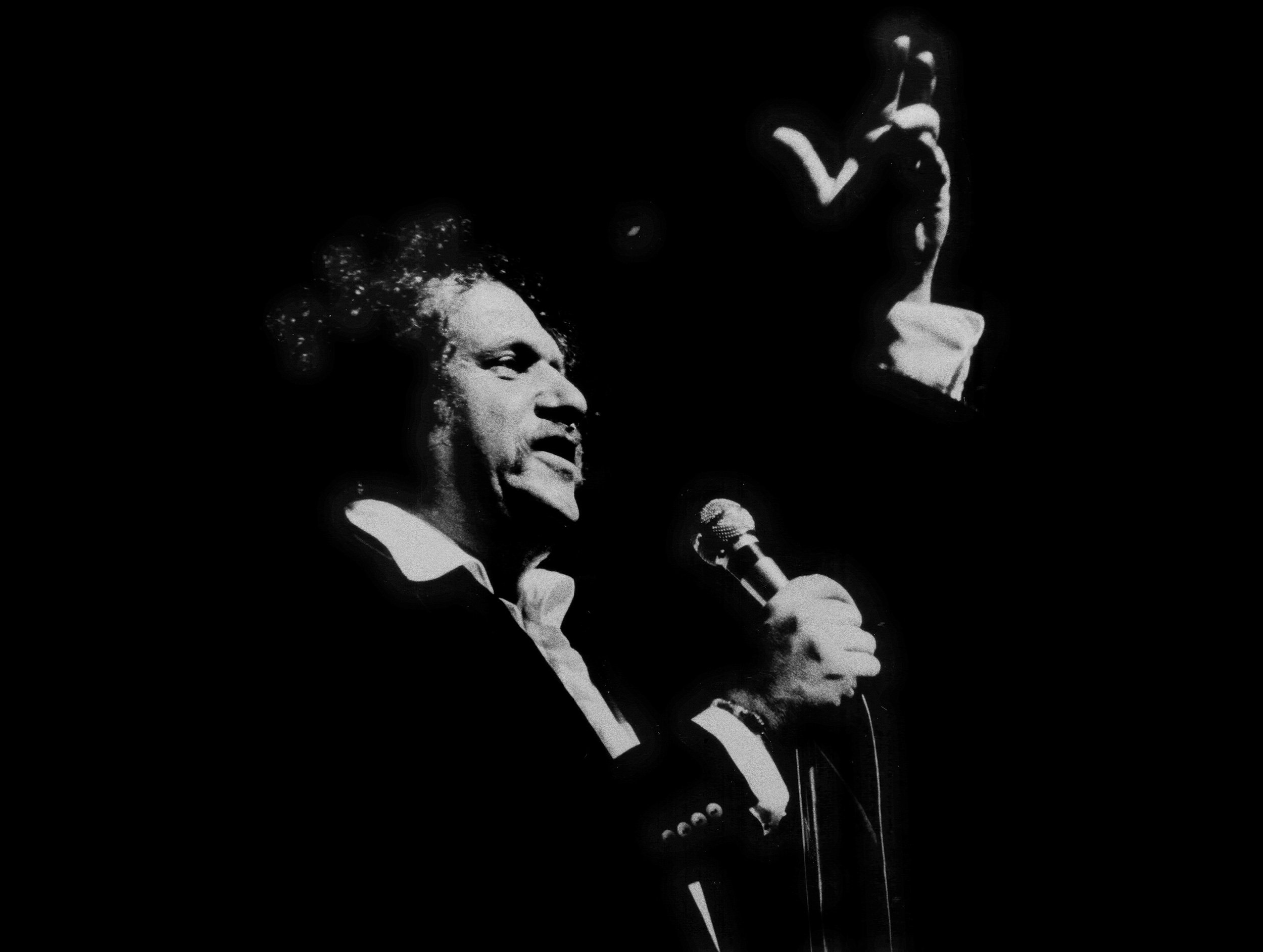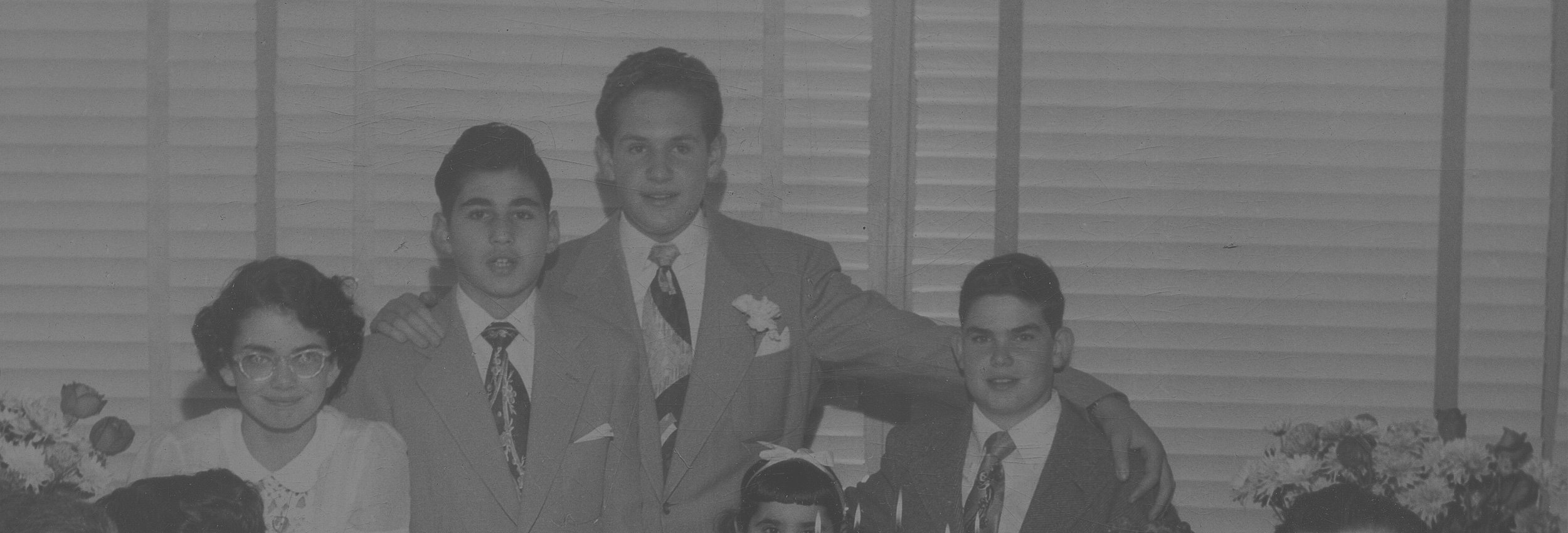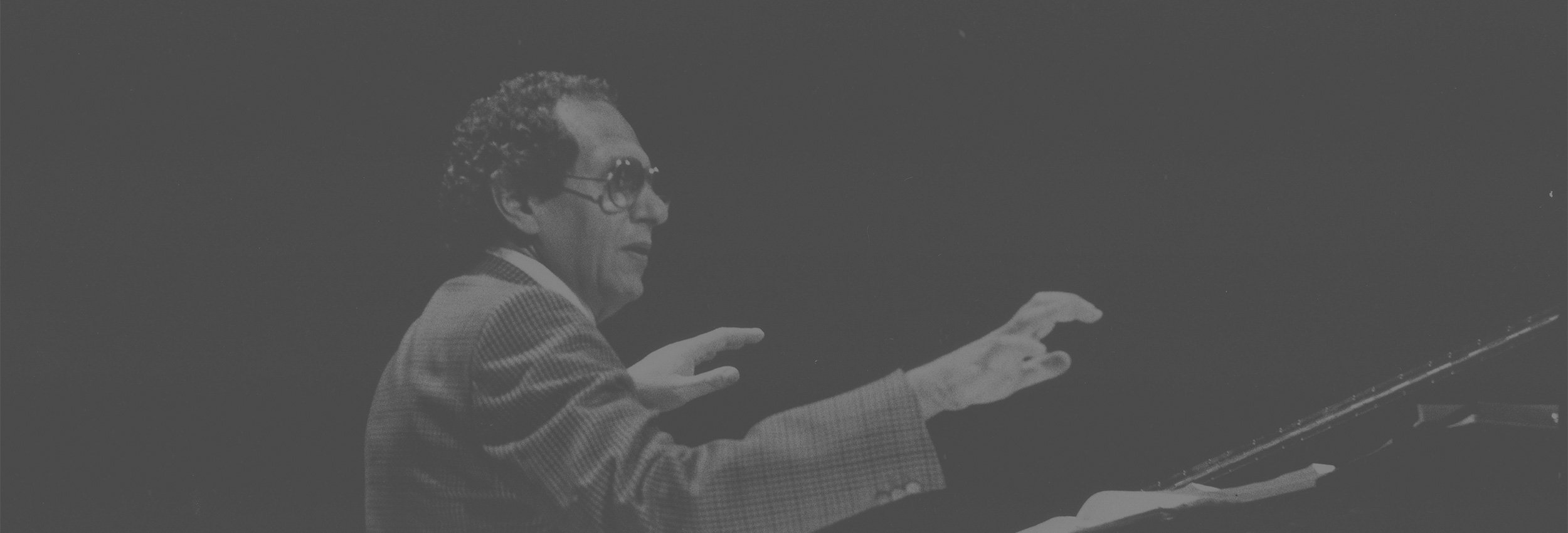
Biography

1938
Mortimer Shuman was born on 12 November 1938 in Brighton Beach (Brooklyn by the Sea, as he called it in his 1973 song of that name).
His parents, Louis and Esther, were immigrant Polish Jews. He lived in the same apartment block as Neil Sedaka and both of them learnt classical piano at the Juillard School of Music.
At 15 Mort went to the New York City College to study philosophy but after a year he was expelled for spending too much time playing piano in bars. Mort loved R&B and Latin - a favourite song was ‘Please Don’t Leave Me’ by Fats Domino (1953).
Mort was introduced to Doc Pomus by Doc’s cousin, Neysha. Although 15 years older, Doc befriended Mort and took him on as an apprentice. Mort would sit with Doc absorbing everything. To begin with Doc would only give Mort 15% of the publishing but soon they wrote together as partners with Doc mostly writing the lyrics and Mort the melodies. Mort usually also sang on their demos.
Click images below to enlarge
1956
Their first release together was THE TIBBS BROTHERS recording of ‘(Wake Up) Miss Rip Van Winkle’ on Atco in 1956. Their first record to make the US pop charts was ‘Love Roller Coaster’ by BIG JOE TURNER also on Atco.
1957
In November 1957 a friend of Doc’s set up a record company called R&B Recording Corporation at 1650 Broadway. Doc and Mort were employed to write for their acts. This venture lasted for only one release ‘Kiss and Make Up’ by THE CROWNS whose lead singer was BEN E KING but when George Treadwell, the Drifters manager, fired the Drifters en masse, Treadwell hired the members of the Crowns to become the Drifters.
Their friend, Otis Blackwell, the successful writer of ‘Don’t Be Cruel’ and ‘All Shook Up’, then introduced Doc and Mort to the Aberbachs who owned Hill and Range and who signed them to a three year songwriting deal.
Although Mort was writing Rock’n’Roll and R&B he loved Latin Music and Jazz just as much. He was a regular at The Palladium, a Latin/American ballroom on West 53rd Street and Broadway where he would hear the likes of TITO PUENTE and MACHITA or he would hang out at The Mambo with such great Jazz musicians as HORACE SILVER, ART TAYLOR and JOHNNY GRIFFIN.
Having enjoyed success with a number of Atlantic acts including RAY CHARLES, BOBBY DARIN, LaVERN BAKER and CLYDE McPHATER. Mort and Doc’s big breakthrough came when Hill and Range directed them to write for ELVIS. Their first attempt ‘I’m A Man’, was rejected by Elvis but along with ‘Turn Me Loose’ , it was recorded by FABIAN and both became US hits peaking at 31 and 9. Mort and Doc had been asked to write for a new group called THE MYSTICS and they came up with ‘Teenager In Love’ (originally written as ‘It’s Great To Be Young And In Love’). On hearing the song, the label thought it was too strong for a new band and gave it to DION & THE BELMONTS who had already had some success. Dion reached a top 5 US hit with his version, but MARTY WILDE beat him in the Uk going to No. 2.
Mort and Doc gave THE MYSTICS their first top 20 US hit with ‘Hushabye’.
1958
Mort and Doc sent to LA to write for Snuffy Garrett by their publishers and Mort often goes down to Mexico.
1959
At the end of 1959, Jack Good persuaded Mort and Doc to travel to the UK for a special edition of the ITV show ‘Boy Meets Girl’ on 21 November. The show was devoted to their songs with Mort performing ‘I’m A Man’ to rapturous applause.
After the show Jack Good recorded Mort singing ‘I’m A Man’ and ‘Turn Me Loose’ at Decca Studios. Mort also put down a quick piano and voice demo of a song he and Doc had written back in the States called ‘A Mess of Blues’.
Mort and Doc stayed for several months revelling in their fame and admiration and meeting most of the British stars of the days – Tommy Steele, Lionel Bart and Anthony Newley.
When Mort and Doc finally got back to the States, Hill & Range had moved to very smart offices at 1619 Broadway (The Brill Building) and Jean Aberbach proudly gave to his top songwriters a very spacious and luxurious office but after a few weeks of inactivity they asked for a place where they could really work.
Their new office was tiny with 2 old chairs, an upright piano and an ashtray!
Mort and Doc finished the 50’s with 3 big US hits ‘(If You Cry) True Love, True Love’ with the DRIFTERS (US pop 33, R&B 5), ‘Hound Dog Man’ with FABIAN (US 9) and ‘Go Johnny Go’ with JIMMY CLANTON (US 5).
Brill Building Further Reading
The Brill Building Sound
Brill Building Pop
Brill Building Songwriters

The 60’s started well for Mort and Doc. ‘This Magic Moment’ by THE DRIFTERS reached 16 in the US charts (in 1968 JAY & THE AMERICANS get to 6 with their cover version).
‘Save the Last Dance For Me’(an unforgettable lyric by Doc with Mort’s wonderful melody which drew upon his love for Latin American music) followed, reaching No 1 in the US charts and No 2 in the UK. This was Mort and Doc’s first US No 1 and THE DRIFTERS biggest record ever.
‘Save The Last Dance For Me’ was inducted into the Grammy Hall of Fame as a Recording of Lasting, Qualitative and Historical Significance. It was also nominated for Grammy Song of the year in 1960.
Whilst Mort and Doc had been in the UK in 1959 they managed to get a demo of ‘A Mess of Blues’ to ELVIS in Germany via his friend Lamar Fike. This was the breakthrough into Elvis’ world and he recorded the song on his first session after his army discharge. The record was the ‘B’ side in the States to ‘It’s Now Or Never’ but still reached 32 in the US charts and 2 in the UK. Mort and Doc were to go on and write 16 songs for ELVIS but they never met him. STATUS QUO’s version of ‘A Mess of Blues’ reached no 15 in the UK charts in the 1980's.
1960 - 1961
Doc and Mort next supplied ELVIS with ‘Surrender’ which went to no 1 in the US and UK and most other countries in the world, in March 61 and then ‘Marie’s the Name (His Latest Flame) both of which went top 5 in the US and No 1 in the UK. These two songs were in fact written for Bobby Vee but his producer, Snuff Garrett thought they were too rock’n’roll. He did however record ‘All You Gotta Do is Touch Me’.
In the meantime THE DRIFTERS released ‘Sweets For My Sweet’ (with Mort on the piano) which charted at 16 in the States. Two years later, The Searchers version went no. 1 in the UK.
1962
The ‘Pot Luck With Elvis’ album (1962) featured four of Mort and Doc’s songs including ‘Suspicion’, which was never released by ELVIS in the States but reached no 9 in the UK. TERRY STAFFORD’s version went top 5 in the US.
‘’Seven Day Weekend’ by GARY US BONDS (US 27) was made for Richard Lester’s first feature ‘It’s Trad, Dad’ which also included two of Mort and Doc’s songs recorded by DEL SHANNON (‘Ginny in the Mirror’ and ‘You Never Talked About Me’).
1963
In 1963 ANDY WILLIAMS had a US pop 2 and AC 1 and UK2 smash with ‘Can’t Get Used to Losing You’. Famously the song was rejected by ten other artists and hated by ANDY WILLIAMS.
1964
‘Viva Las Vegas’ was released in 1964 only reaching 29 in US and 17 in UK but spawning versions from BRUCE SPRINGSTEEN, ZZ TOP and THE DEAD KENNEDY’S which was used in ‘Fear and Loathing in Las Vegas’. The film entitled ‘Viva Las Vegas’ was Elvis’s biggest box office success.
In 1964 Mort spent time in the UK writing hits for BILLY J KRAMER – ‘Little Children’ (no 1),
THE HOLLIES – ‘Here I Go Again’ (no 4), CILLA BLACK ‘Love’s Just a Broken Heart’ (no 5) and ‘What Good Am I?’ (no 24) and THE SMALL FACES – ‘Sha La La La Lee’ (no 3)
1965
By the mid sixties, Doc and Mort had begun to drift and work apart. They both wrote separately with Jerry Ragovoy – Mort co-writing songs for GARNET MIMMS, DUSTY SPRINGFIELD (‘What’s it Gonna Be’ and “I’ve Got A Good Thing’) and for HOWARD TATE in the legendary sessions produced by Ragovoy, (‘Look At Granny Run, Run’ Get it While You Can’ and ‘Stop’ – all US Top 20 R&B hits.
Get It While You Can’ became one of JANIS JOPLIN’s signature tunes and was later recorded by JANIS together with ‘My Baby’ (another Ragovoy/Shuman collaboration) on her iconic album ‘Pearl’.‘Stop’ was regularly performed in concert by JIMI HENDRIX and his last band – BAND OF GYPSY’S. He recorded the song live at Filimore East shortly before his death.
1966
Doc and Mort got together in 1966 to write and produce ‘ Bring Him Back’ and ‘World of Broken Hearts’ for CISSY (SISSIE) HOUSTON. They also wrote for BOBBY VINTON and the McCOYS single ‘Say Those Magic Words’, which was also recorded by THE BIRDS.
Mort and Doc’s last collaboration for ELVIS – ‘Double Trouble’ – was recorded by Elvis in 1966 and this marked the end of an era although Mort did go on to write on his own one further song for Elvis entitled ‘You’ll Think of Me’ (1969).
The Pomus/Shuman duo had written over 500 songs between 1958 and 1965.
1966 - 1968
While holidaying and partying in St Tropez in 1966, Mort discovered and fell in love with the work of the Belgian singer-songwriter JACQUES BREL. Returning to New York he and poet Eric Blau translated 25 of Brel’s songs and created the review ‘JACQUES BREL IS ALIVE AND WELL AND LIVING IN PARIS’. The original show debuted Off-Broadway on January 22, 1968 at The Village Gate Theatre in Greenwich Village and ran for more than four years. Its original performers were Elly Stone, Mort Shuman, Shawn Elliott and Alice Whitfield. The production was directed by Moni Yakim. Columbia recorded and released a double album of the original cast’s performances.
The show became one of the longest running off-broadway musicals and subsequently has toured extensively around North America and the rest of the world. Sir Peter Hall presented the show at the Platform at the National Theatre in London.
Mort’s translations of Brel’s works were recorded by many artists including SCOTT WALKER (‘Mathilde’, ‘Funeral Tango’, ‘Jacky’, ‘My Death’, DAVID BOWIE (‘Amsterdam’), DION, DIONNE WARWICK and JOHNNY MATHIS (‘If We Only Have Love’) JUDY COLLINS (‘Sons of’), ALEX HARVEY BAND (“Next’) and MARC ALMOND (‘Jacky’).
1969
Reprise Records release Mort’s first solo album entitled “MyDeath” – a deeply personal, adult, eccentric, theatrical and songwriting tour de force. Produced by Jerry Ragavoy.
This album was re-released by Cherry Red Records on the Rev-Ola label in 2009

1971
The triumph of ‘Jacques Brel is Alive and Well and Living in Paris’ lasted for several years and in 1971 the French release of the record is supported by the scheduling of "Jacques Brel is Alive..." at La Taverne de l’Olympia.Mort finds there the ambiance of Village Gate.
The few short trips he had made to Paris in previous years had charmed him. The reception of the show, the city, the way of life, had seduced him to such an extent that he decides to settle there. The balcony of his first Paris apartment opens out onto the Eiffel Tower and towers over the Champ de Mars.
1972
Collaboration with Etienne Roda-Gil. Recording of "AMERIKA". The lyrics of Roda-Gil are almost de rigueur to get into Mort’s new world. In France, he writes “Slave”, forgetting rock and the blues which had built his fortune and international glory. He composes finely subtle melodies with classical nuances. Unlike the tragic, aggressive and angry style of Brel, he opts for tenderness and discretion. He sings nonchalantly, without forcing, with a melancholic, world-weary tone, and above all tender in its inspiration. "Le Lac Majeur" becomes the hit of the year and is subsequently recognised as one of the most successful singles of all time in France.
1973
Two albums.
A version for the French market of an album in English which mixes tracks from Brel, Bertold Brecht, Baudelaire.
Second collaboration Roda-Gil/Shuman with "VOILA COMMENT"
1974
A French/Canadian musical film is made of "Jacques Brel is Alive and Well and Living in Paris" Directed by Denis Heroux and starring Mort, Elly Stone, Joe Masiell and Jacques Brel himself. The film had no dialogue – the entire film was song. The film was released in Canada and USA in 1975 and France in 1976.
"DES CHANSONS SENTIMENTALES" is a semi-flop.
Mort writes the music for a film by Michel Mitrani "Les guichets du Louvre".
Re-release of the double album "Jacques Brel Is Alive..."
1976
Original soundtrack for a film by Michel Lang “A Nous les Petites Anglaises”. He acts in and writes the original soundtrack for a film by Michel Vianney "Un type comme moi ne devrait jamais mourir".
A stay in Brussels for the complete filming of a remarkable film by André Ernotte "Rue Haute". Mort acts extremely well alongside Annie Cordy.
He continues to write music. New collaborators, Elisabeth Moreau and Philippe Adler, write texts and achieve popular success with the album “IMAGINE” on which "Papa Tango Charly", "Sorrow" and "Save The Last Dance For Me" appear among others. He writes the original soundtrack for the film by Roger Vadim, "Une femme fidèle".
1977
Take Elisabeth Moreau and Philippe Adler, add Alain Souchon, and you get "MY NAME IS MORTIMER".
A successful year for original film soundtracks.
Huge success for the original soundtrack of "L’Hôtel de la Plage" by Michel Lang.
Less commercial, "Plus ça va, moins ça va" by Michel Vianney, enables Mort to meet the film actors Michel Serrault and Jean Carmet.
He plays alongside Jodie Foster and Martin Sheen in "La petite fille au bout du chemin" – ‘The Little Girl That Lives down The Lane") by Nicolas Gessner before writing the music for the documentary by François Reichenbach "Sex O’Clock USA".
1978
New gold disc for "LE NEGRE BLANC". The cult track of "L’Hôtel de la Plage", "Un Eté de Porcelaine", is next to more personal pieces such as: "Le Nègre Blanc", "Comme avant", or "On a déjà donné" which Michel Sardou took up. While the stage is not his main cocern, Mort signs up for a three-month summer tour of the Europe 1 Podium. The group "Il Etait Une Fois" performs the first part.
1979
Original soundtrack for the film by René Gainville "L’associé" with Michel Serrault.

1981
New – less fruitful – collaboration with Michel Lang for the original soundtrack of the film “On n’est pas des anges...elles non plus” and an on screen appearance alongside Johnny in a film by Claude Mulot “Le jour se lève et les conneries commencent”.
1982
Another summer tour. RMC Podium for 45 days with Roland Magdane up first. For the writing of the album “LUMIERES D’AMOUR”, Mort calls on new writers: Laurence Matalon, Patrick Larue, Christian Eclimont and Françoise Dammien.
He works with Loïc Le Guen and Claude Lemesle for several months on a new musical “MA VILLE”. This project is a song about love for Paris. Like De Lutèce, in the between wars style; Mort wants to tell the story of Paris by expressing his attachment to this city and his happiness at living there.
1983
Release of the album taken from the musical story of “Ma Ville”. Nicoletta and Philippe Lavil participate in the recording. Le Guen and Mort wear themselves out lobbying at the Paris Town Hall, which assures them of its support. The show was never to be put on and the record did not meet with public success. Mort experiences this failure with frustration and deep disappointment.
1984
Mort and Doc meet in Nashville to accept a BMI Award for Dolly Parton’s Top 5 Country hit of ‘Save The Last Dance For Me’. They hadn’t met for years. Back in New York they met again and they go out together to the Lone Star. They started writing together but the song was never completed and Doc and Mort never saw each other again.
1985
A new solo record “PHARAON”. France Inter and Europe 1 support the title track and the B side of the promo single “Le Blues (Appelez ça comme vous voulez)”. But fashion had changed, “free radio” exploded on the FM frequency. Not quite rock and not exactly song, the disconcerting way that tracks move between violence and melancholy with a sensuality and instinctive sweetness, puzzles the novice programmers of the new radio stations.
Yves Mourousi has the Egyptian rooms at the Louvre museum opened up at night to televised News teams for the filming of the pop-video for “Pharaon”. The same Mourousi accepts the writing and singing on “Ça va...” a huge disco single produced and realised by Mort at the Palais des Congrès. For this record, Shuman brings in keyboards, choirs and the rhythms.
1986
A new project stimulates Mort and keeps him in France: a film. The director Claude Bernard Auber offers him the film script with a provisional title “La Jonque”. He would have to co-star with Lino Ventura. But putting together a film is a complicated business in that a good script and a key star do not necessarily arouse the interest of producers. Discussions drag on and stall. Lino Ventura disappears. The film is never made. Goodbye to the Hong Kong exteriors. The Shuman family set up in London. From then on Mort works hard on musicals and music for television productions.
1988
BUDGIE – THE MUSICAL – Mort’s first West End Stage production- opened on 18 October at Cambridge Theatre. Mort wrote the music, Don Black, the lyrics and Keith Waterhouse and Willis Hall the Book. Based on the 70’s hit TV series, the show starred Adam Faith and Anita Dobson.

1990
Mort’s album "Mortimer" goes Gold in France. Mort undertakes extensive promotion with many TV, radio and live appearances.
Mort has meetings with Mike Ockrent about their collaboration to write and develop a musical based on Vittorio de Sica’s 1948 film, “The Bicycle Thieves”.
Mort starts writing and recording what was to become his last solo album sung in English, aided by a group of very talented musicians Rod Argent (Zombies), Russ Ballard (Roulettes), Peter Van Hooke (Van Morrison band), Tim Renwick (Sutherland Brothers, Quiver, Al Stewart, Eric Clapton band), Clem Clempson (Colloseum, Humble Pie), Mo Foster (Jeff Beck, Joan Armatrading/Phil Collins bands). “DISTANT DRUM” was completed in 1990.
1991
Mort wrote and produced all the music for a French TV series called SALUT LES COPAINS (“Hi Little Bastards”), inspired by the TV soap opera of the same name. It first aired in November 1991. The record was also released in the same period.
DISTANT DRUM was released in 1991 by EastWest Records/Atlantic. A single, “Promised Land” was released with a promotional video (shot in the Dingle in Eire) and Mort undertook a series of promotional activities with TV, radio and press mostly in Germany where the album was first released. The album includes one of the last (if not the last) songs written by Doc Pomus and Mort – “You Cant Make A Woman Love You”.
DISTANT DRUM was re-released in 1998 by Thunderbird Records.
14th MARCH 1991 – Doc Pomus dies
2 NOVEMBER 1991 – Mort dies after a courageous battle against cancer. He was survived by his wife, Maria-Pia and daughters, Barbara, Maria-Pia and Eva-Maria
Events to celebrate Mort’s life were held in New York (contributions from Eric Blau, Harriet Holtsman, Aaron Schechter, Joe Neal, Paul Felder, Sean Elliot & Elly Stone) and in London (Don Black, Tim Rice, Errol Brown, Sandie Shaw, Simone and many others).
1992
Mort was inducted into the Songwriters Hall of Fame.